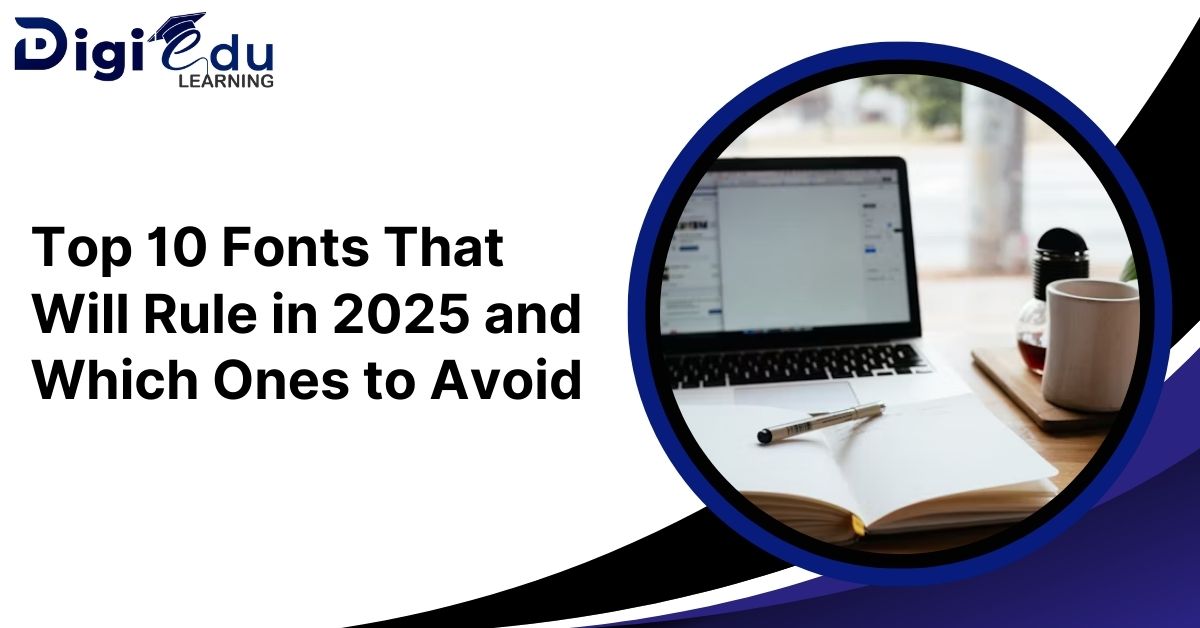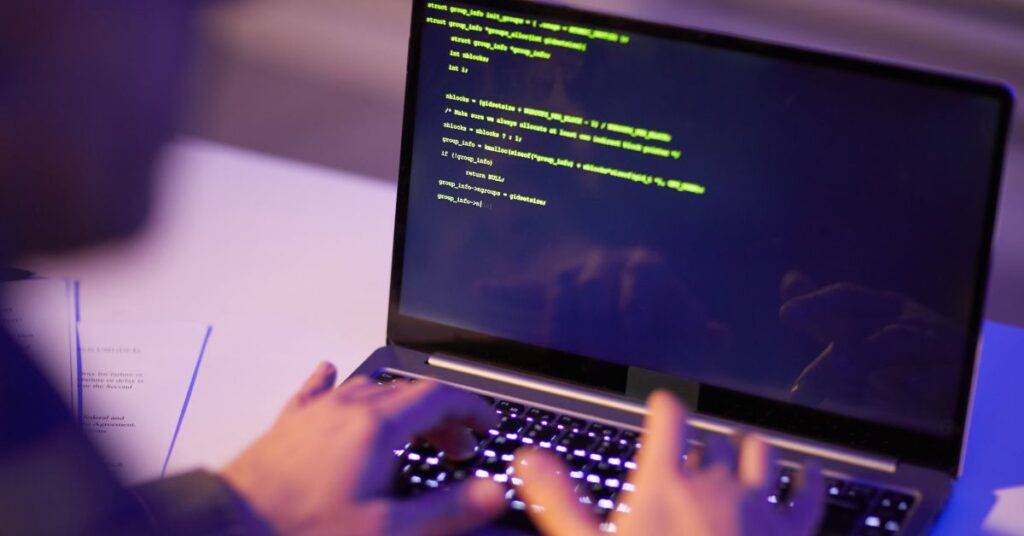Top 10 Fonts That Will Rule in 2025 and Which Ones to Avoid

Typography is one of the most powerful tools in design, and in 2025, fonts are becoming more than just style elements. They define brand identities, shape user experiences, and influence how audiences perceive content. As digital design, branding, and UI trends evolve, students and professionals in graphic design must understand which fonts are gaining relevance and which ones are slowly becoming outdated.
1. The Rise of Minimalist Sans-Serifs
Sans-serif fonts continue to dominate in digital spaces because of their clean, modern, and versatile appearance. Fonts like Inter and Montserrat are becoming the go-to typefaces for web design, app interfaces, and branding projects. Their geometric clarity and readability on all screen sizes make them reliable choices. In 2025, the trend leans heavily towards simplicity and legibility, especially as brands try to maintain consistency across multiple devices and digital platforms.
2. Fonts That Emphasize Personalization
Custom typefaces are on the rise as brands move away from generic styles to more personalized, distinctive fonts. Companies are investing in unique variations of classic fonts or developing exclusive typefaces to stand out. While not everyone can design their own font, students and designers can rely on fonts like GT America or Neue Haas Grotesk, which offer flexibility and a sense of uniqueness without losing clarity. These fonts strike the right balance between character and functionality, which is highly sought after in 2025.

3. Bold Display Fonts for Attention
Display fonts are making a comeback for branding, advertising, and social media posts where grabbing attention is critical. Fonts like Recoleta and Clash Display are increasingly popular for their bold, stylish, and contemporary flair. These fonts are perfect for headlines, posters, and campaigns that demand visual impact. However, designers must use them carefully, keeping them limited to headings while maintaining readability with simpler body text fonts.
4. Humanist Fonts for Emotional Connection
Humanist fonts, such as Optima and Gill Sans Nova, are gaining traction because they feel approachable and organic compared to purely geometric sans-serifs. In 2025, as brands focus more on authenticity and storytelling, humanist fonts help establish trust and relatability. These fonts combine professionalism with warmth, making them popular choices for lifestyle brands, educational institutions, and businesses focusing on personal engagement.
5. Variable Fonts for Flexibility
The rise of variable fonts is one of the most significant typography trends in 2025. Fonts like Roboto Flex and Helvetica Now Variable allow designers to adjust weight, width, and style dynamically without switching between multiple files. This makes them efficient, lightweight for websites, and incredibly versatile for responsive designs. Digital-first businesses prefer variable fonts because they improve load times while offering creative freedom. Students who master variable typography will be better prepared for future demands in design.
6. Serif Fonts Making a Modern Return
Serif fonts, once considered traditional and outdated, are re-emerging with modern twists. Fonts like Cormorant Garamond and IBM Plex Serif are becoming trendy again as they blend elegance with contemporary usability. In 2025, many editorial platforms, blogs, and premium brands are turning to modern serif fonts to communicate sophistication and credibility. They are also finding space in UI design, where designers pair them with clean sans-serifs for a balanced aesthetic.
7. Retro Fonts with a Contemporary Twist
Nostalgia is influencing design trends, and retro-inspired fonts are becoming popular in 2025. Fonts like Cooper Black and Cabinet Grotesk are reappearing but with modern adjustments to ensure better readability and adaptability. These fonts work particularly well in creative industries, fashion, and entertainment, where a sense of playfulness and uniqueness is appreciated. The key is to use them selectively to evoke nostalgia without overwhelming the overall design.
8. Minimal Monospaced Fonts
Monospaced fonts, once associated only with coding and typewriters, are being reimagined for modern design. Fonts like IBM Plex Mono and Space Mono are gaining popularity for digital projects that require technical precision while still appearing stylish. In 2025, designers are increasingly using monospaced fonts for branding in tech startups, modern portfolios, and futuristic UI design. Their grid-like structure gives a sense of order and innovation.
9. Fonts to Avoid in 2025
While new fonts are emerging, some older ones are best left behind. Fonts like Comic Sans, Papyrus, and overused free fonts from online libraries have lost credibility. They are considered unprofessional, outdated, and visually unappealing in modern contexts. Similarly, overly decorative fonts that sacrifice readability for style are falling out of favor. In 2025, audiences value clarity, minimalism, and sophistication, so avoiding these outdated fonts ensures that designs remain contemporary.

10. Balancing Trend and Timelessness
One of the challenges for students and professionals is choosing fonts that balance current trends with long-term usability. While it is tempting to adopt every trending font, timeless choices like Helvetica, Futura, and Roboto continue to maintain relevance because of their adaptability. Successful designers in 2025 are those who know when to embrace trends and when to rely on proven classics. By combining the two, they can create designs that feel modern without becoming quickly outdated.
Conclusion
Typography in 2025 is all about clarity, personalization, and adaptability. The fonts that dominate this year reflect broader design values such as minimalism, flexibility, and emotional connection. From versatile sans-serifs like Montserrat to modernized serifs like IBM Plex Serif and bold display fonts like Clash Display, designers have more tools than ever to express creativity and professionalism. At the same time, avoiding outdated options such as Comic Sans or Papyrus ensures that work remains credible and competitive. For students and aspiring designers, mastering these trends is not just about staying fashionable but about understanding how typography impacts user experience and brand identity.
At Digi Edu Learning, typography is taught as a core part of design education, enabling students to practice with trending fonts, explore professional applications, and build portfolios that align with industry standards. By combining knowledge of modern typography with hands-on training, Digi Edu Learning prepares students to create designs that are both trend-conscious and timeless.







Leave a Reply